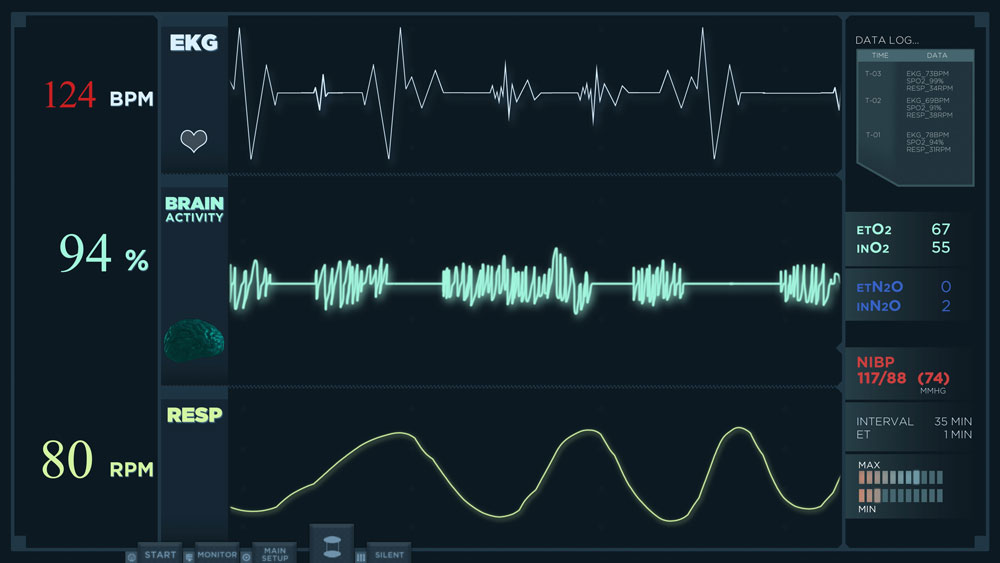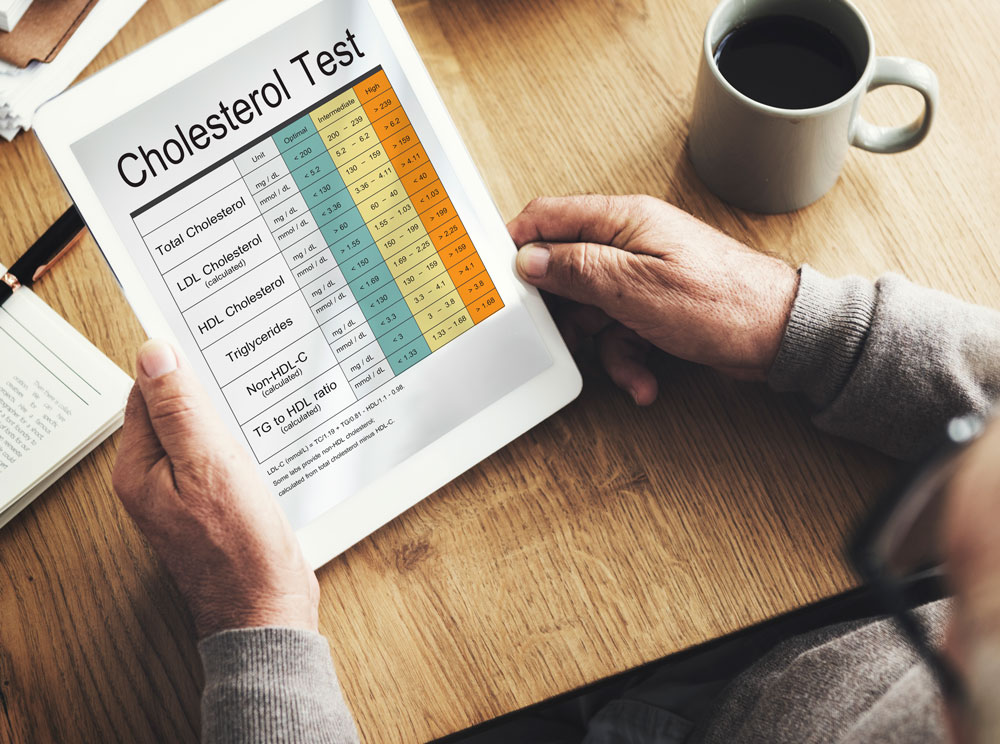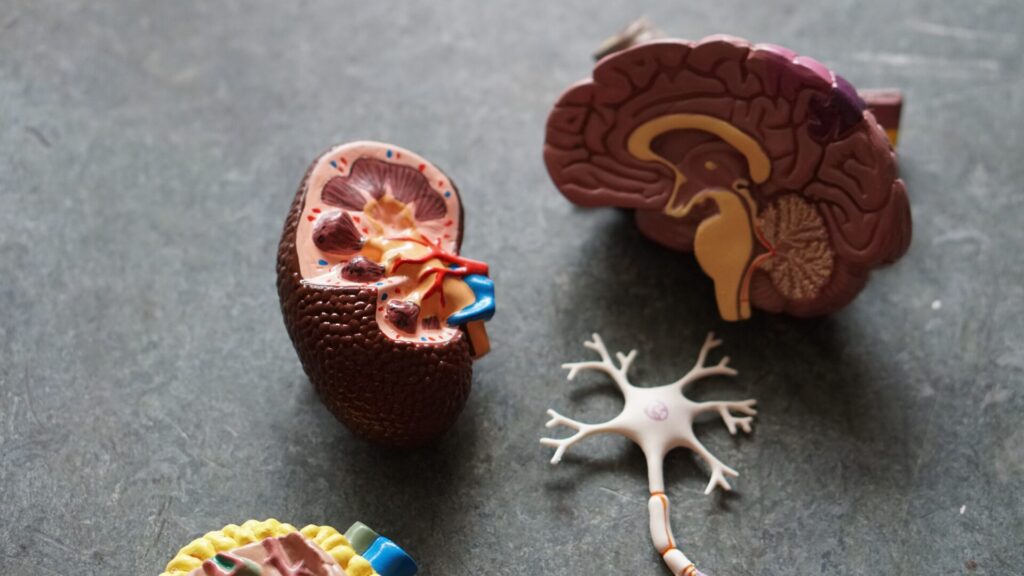HRV is one of the best-kept secrets in heart attack prevention, but why – and what is it?
HRV (heart rate variability) measures the intervals between heartbeats. HRV rates tend to go up when you’re relaxing and down when you’re under stress, so a slow heart rate results in a higher HRV that goes lower the more anxious you become.
HRV is under the control of your autonomic nervous system (ANS), which is further divided into two elements – the sympathetic nervous system that’s responsible for such things as your fight-or-flight response, and the parasympathetic nervous system that triggers the relaxation response. Your ANS peforms a lot of functions you think of as automatic, like regulating blood pressure, digestion, heart rate, breathing, and other key tasks.

Your brain processes information in its hypothalamus, which receives signals from the ANS. There are multiple stressors and moments of relaxation during an average day, all of which your ANS handles by directing the stimulation or relaxation of different functions. From feeling stressed when you’re late for work to enjoying a night out with friends, everything provokes an autonomic nervous system response.
Problems with this system only arise if stressors become a constant or frequently recurring problem. In addition to chronic stress, the most common issues include:
- Poor quality sleep
- Unhealthy diet
- Relationship problems
- Difficult working environment
- Social isolation
- Lack of exercise
- Chronic anxiety
All these factors contribute to the your ANS being on permanent alert, constantly triggering your fight-or-flight response.
Whereas your heart rate is expressed in beats per minute – literally the number of times your heart beats in 60 seconds – heart rate variability measures the time between beats. You might wonder what difference that makes; surely if your heart beats 60 times in a minute, it’s beating once every second? Not so; the gap between beats can vary by fractions of a second, so the interval could be .85 between two beats then 1.15 between the next two. The more marked the difference, the more your body is experiencing fight-or-flight mode.
What’s the optimal HRV level?
It isn’t possible to state an absolute optimum for HRV, because so many factors can affect it. A perfectly healthy adult could have an HRV of anything between 20 and 200 milliseconds, so the best approach is to benchmark your HRV over several weeks and then check periodically for any marked differences. Comparing your HRV to someone else’s isn’t a lot of help either, because everyone’s HRV is different.
Your HRV can tell you how you’re coping with stress and how fit you are. The better your cardiovascular fitness is, and the better you manage stress, the higher your HRV is likely to be. Similarly, a low HRV suggests you need to change your lifestyle to improve your cardiovascular health.
Can HRV predict a heart attack?
There’s increasing evidence supporting the theory that HRV is an accurate predictor of heart attacks. For example, the HRV‐DETECT (Heart Rate Variability for the Detection of Myocardial Ischemia) Study looked into this issue and found that low HRV significantly increased the participants’ likelihood of having cardiac ischemia – a trigger for arrhythmia and heart attacks.
The imbalance in autonomic activity that HRV detects adversely affects the cardiac rhythm, potentially leading to ventricular arrhythmia and, in some cases, sudden cardiac death. HRV has undergone evaluation as a mortality indicator for many diseases over recent years and become an accepted and important marker in heart disease.
What happens before a heart attack, and how does HRV predict myocardial infarction?
Heart attacks occur when something stops blood from flowing in part of your heart. This cuts off oxygen, and the affected area starts to die. When you suffer a heart attack, the first stage involves a decrease in the parasympathetic nervous system’s activity in response to a physical or emotional stressor, followed by an increase in sympathetic nervous system activity. The result is a rise in adrenaline output, which instructs the myocardial cells in your heart to use glucose for fuel, rather than its primary energy source – ketones and fatty acids.
What follows is a dramatic spike in the production of lactic acid in the myocardial cells. In a cascade of consequences, localized acidosis prevents calcium from entering the cells, so they struggle to contract, followed by oedema (fluid buildup), hypokinesis (dysfunction of the heart’s walls), and tissue death – the heart attack. For a heart attack to occur, parasympathetic activity must decrease before the activation of the sympathetic nervous system. HRV monitoring provides an accurate evaluation of the status of the sympathetic and parasympathetic branches of the ANS, indicating if a heart attack is imminent.
What can we do about improving HRV?
Having established there’s clear evidence of the link between HRV and cardiovascular disease, improving HRV becomes a priority. Here are some ideas for optimising your HRV:
- Exercise regularly but avoid overstraining your body
- Eat a healthy, heart-friendly diet
- Adopt regular eating patterns
- Avoid eating 3-4 hours before bed.
- Stay hydrated by taking frequent drinks, preferably of plain water
- Avoid alcohol consumption
- Adopt consistent bedtimes to ensure you get enough REM and deep sleep
- Soak up some natural sunlight every day, especially first thing
- Practice slow, controlled breathing
- Take up relaxation activities like mindfulness, meditation, or yoga to reduce stress
- Another idea for improving HRV is to have a very cold shower. This stimulates your vagus nerve, activating the parasympathetic nervous system – but if the idea of plunging your body into cold water doesn’t appeal, sticking with the other options should still make a significant difference to your HRV.







